Affiliate links on Android Authority may earn us a commission. Learn more.
Google Pixel 7a vs Pixel 7: Which is the better budget buy?
Published onFebruary 13, 2024
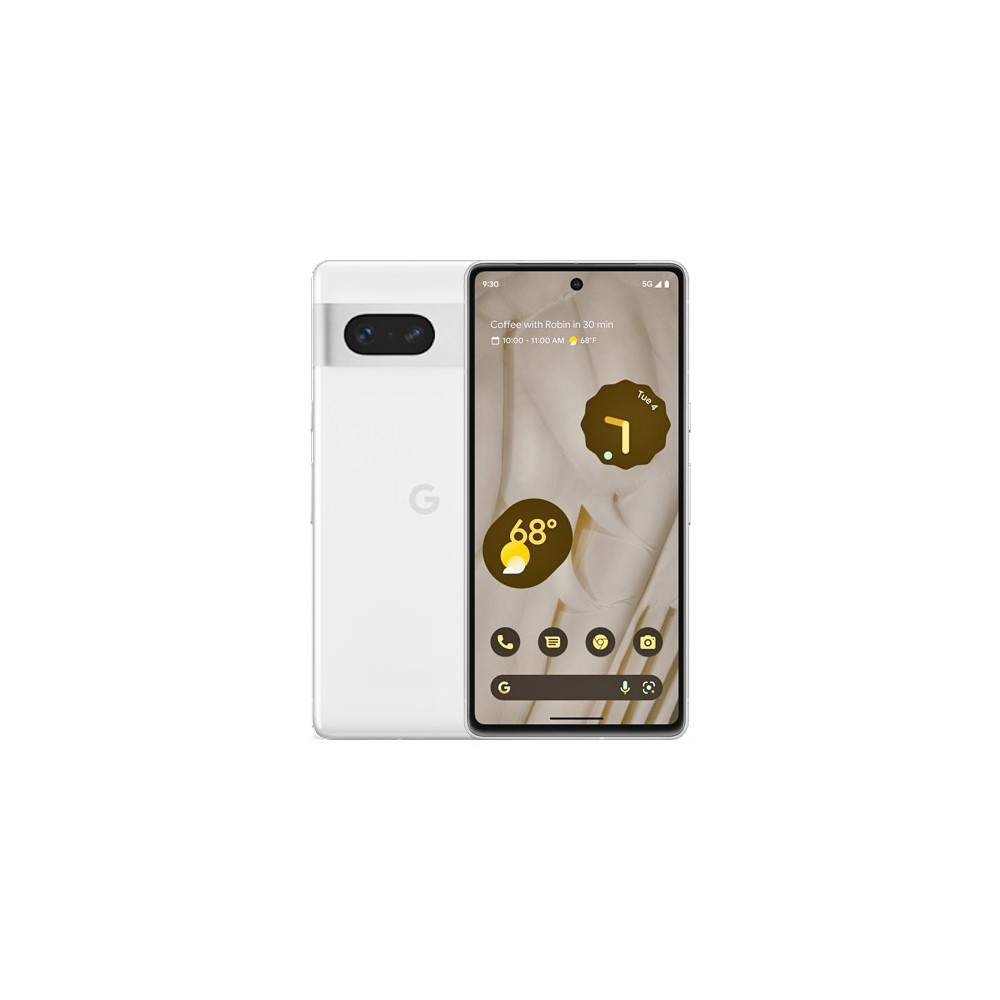



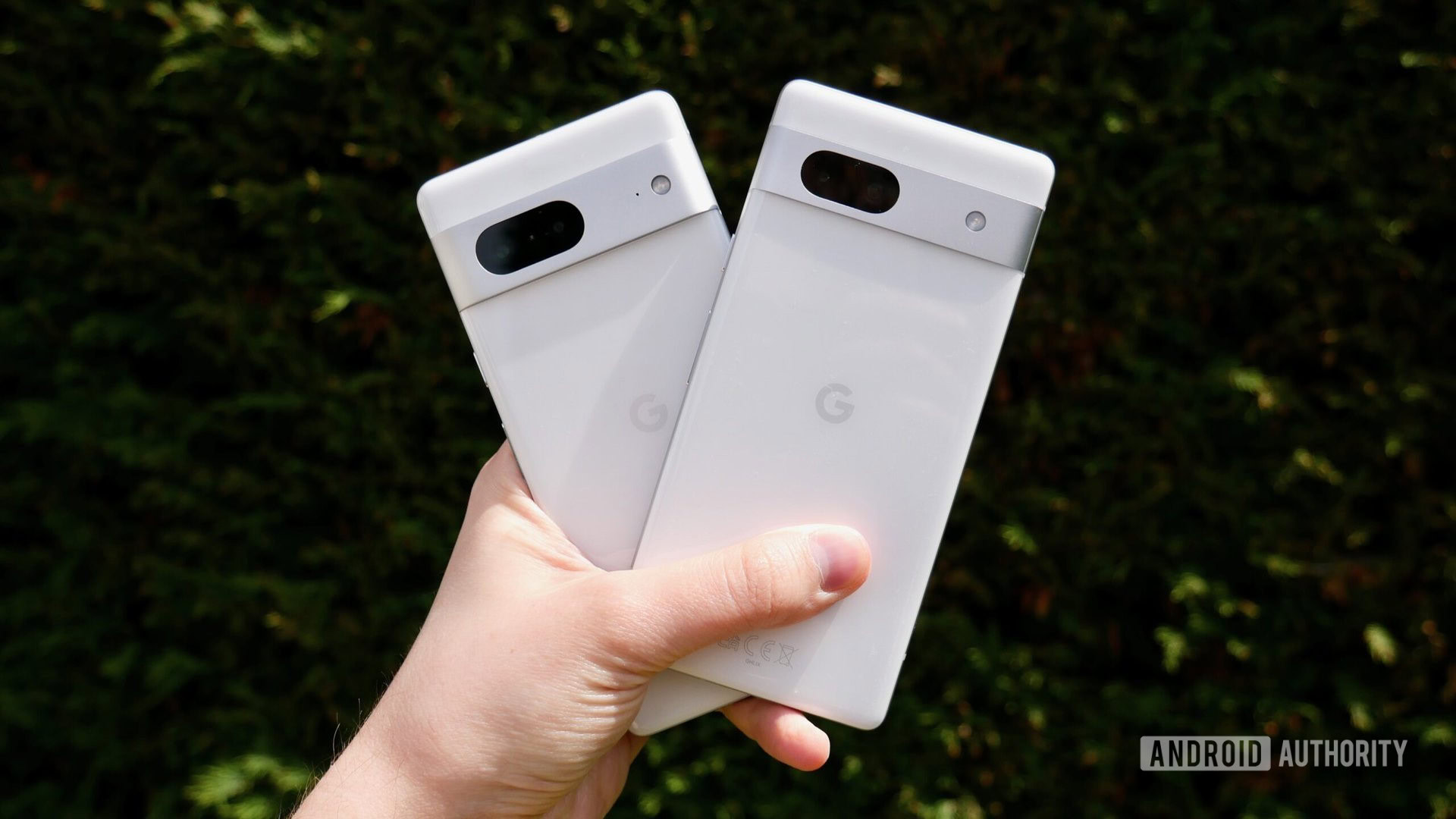
The Google Pixel 7a is the latest entry in Google’s budget smartphone portfolio, providing a more accessible alternative to 2022’s Pixel 7 and 7 Pro. In years gone by, Google has previously cut a number of features to hit the A series’ lower price point. The Pixel 7a is different, blurring the lines with the already affordable flagship. When it comes to the Google Pixel 7a vs Pixel 7, which should you buy? That’s what we’re going to decide.
Google Pixel 7a vs Pixel 7: At a glance
If you're looking for a quick summary of the differences, here's the TDLR of the Google Pixel 7a vs Pixel 7:
- Both phones offer the same powerful Google Tensor G2 processing and Titan M2 security co-processor.
- Both phones offer similar camera specifications, but the Pixel 7 has more features. For instance, the Pixel 7a misses out on cinematic blur and is limited to 4K30 video on its ultrawide and selfie cameras.
- The Pixel 7 has a marginally larger display, but the 7a has the same resolution and refresh rate.
- Google has vastly improved the build quality of the Pixel 7a. Even so, the Pixel 7 retains a slight edge regarding glass drop protection and water resistance.
- The Google Pixel 7 supports faster wired and wireless charging than the 7a.
- Google's Pixel 7a launched $100 cheaper than the Pixel 7 was at launch. However, Google's regular discounts on the Pixel 7 mean it's often a close call between the two.
Keep reading to learn more about the Google Pixel 7a vs Pixel 7 and how they differ.
Google Pixel 7a vs Pixel 7: Specs
| Google Pixel 7a | Google Pixel 7 | |
|---|---|---|
Display | Google Pixel 7a 6.1-inch OLED FHD+ 2,400 x 1,080 20:9 aspect ratio 90Hz refresh rate Gorilla Glass 3 cover | Google Pixel 7 6.3-inch AMOLED FHD+ 2,400 x 1,080 20:9 aspect ratio 90Hz refresh rate Gorilla Glass Victus Cover |
Processor | Google Pixel 7a Tensor G2 | Google Pixel 7 Tensor G2 |
RAM | Google Pixel 7a 8GB LPDDR5 | Google Pixel 7 8GB LPDDR5 |
Storage | Google Pixel 7a 128GB No microSD card support | Google Pixel 7 128GB / 256GB No microSD card support |
Power | Google Pixel 7a 4,385mAh battery 18W wired charging 7.5W wireless charging Battery Share not supported | Google Pixel 7 4,355mAh battery 20W wired charging 20W wireless charging Battery Share supported |
Cameras | Google Pixel 7a Rear: - 64MP wide primary sensor (0.8μm, ƒ/1.89, 80-degree FoV, 1/1.73-inch image sensor size) - 13MP ultrawide (1.12μm, ƒ/2.2, 120-degree FoV) Front: - 13MP wide (1.12μm, ƒ/2.2, 95-degree FoV) | Google Pixel 7 Rear: - 50MP wide primary sensor (1.2 μm, ƒ/1.85, 82-degree FoV, 1/1.31-inch sensor, OIS and EIS) - 12MP ultrawide (1.25μm, ƒ/2.2, 114-degree FoV) - Laser AF Front: - 10.8MP wide (1.22 μm, ƒ/2.2, 92.8-degree FoV) |
Video | Google Pixel 7a Main sensor capable of 4K at 60fps Ultrawide and selfie capable of 4K at 30fps | Google Pixel 7 All sensors capable of 4K at 60fps |
Software | Google Pixel 7a Pixel UI Android 13 3 Android updates 5 years of security updates | Google Pixel 7 Pixel UI Android 13 3 Android updates 5 years of security updates |
IP rating | Google Pixel 7a IP67 | Google Pixel 7 IP68 |
Biometrics | Google Pixel 7a In-display fingerprint scanner Face unlock | Google Pixel 7 In-display fingerprint scanner Face unlock |
Connectivity | Google Pixel 7a 5G sub6 (all models) mmWave (Verizon only) Wi-Fi 6E Bluetooth 5.3 | Google Pixel 7 5G sub6 (all models) mmWave (Verizon only) Wi-Fi 6E Bluetooth 5.2 |
Dimensions | Google Pixel 7a 152.4 x 72.9 x 9.0mm | Google Pixel 7 155.64 x 73.16 x 8.7mm |
Weight | Google Pixel 7a 193g | Google Pixel 7 197g |
Materials | Google Pixel 7a Plastic back Gorilla Glass 3 front Aluminum alloy frame/visor | Google Pixel 7 Aluminum frame Gorilla Glass Victus front and back |
Colors | Google Pixel 7a Charcoal, Coral, Sea, Snow | Google Pixel 7 Obsidian, Lemongrass, Snow |
The improved display is one of the more significant updates we noted in our Google Pixel 7a review. It boasts a smooth 90Hz maximum refresh rate, a notable upgrade over the old 60Hz panel. It now matches the capabilities of the smooth Pixel 7 screen. The display is a little smaller than the regular 7. You’ll see the same FHD+ resolution at a 20:9 aspect ratio, and a snappy display-embedded fingerprint scanner. Other noteworthy improvements include wireless charging support for the first time in the Pixel A series. It also has improved build materials in the form of an anodized metal frame, which brings the phone even further in line with the Pixel 7.
The Pixel 7a benefits from other lineup familiarities, too. Google’s Tensor G2 processor reappears, packed with flagship-level performance, reasonable gaming chops (if you don’t plan to play for too long), and an upgraded Tensor Processing Unit (TPU) that powers the phones’ machine learning capabilities, such as Assistant voice typing and photo processing features like Night Sight. In fact, it’s the same processor as you’ll find in the more expensive Pixel 7 and Pixel 7 Pro; the entire series benefits from Google’s semi-custom processor to enable a very similar feature set across all three. It’s paired with the same 8GB RAM and 128GB base storage configuration, though the Pixel 7’s 256GB option will appeal to the more insatiable media consumer.
The Pixel 7a has been upgraded to include very similar specifications to the Pixel 7.
Google extends its shared vision over to software two. The entire Pixel 7 series, including the budget-friendly Pixel 7a, will receive three years of Android OS updates and five years of security patches. The Pixel 7 lineup has already burned through over a year of support, but both handsets will see you comfortably through until 2027/2028, which thankfully feels like a lifetime away.
However, there are some subtle but key differences between the Pixel 7a and Pixel 7. The regular model has a slightly better IP68 rating than the 7a’s IP67. However, the Pixel 7a comes with Bluetooth 5.3, up from 5.2. The Pixel 7a is also slower to charge, and the camera setup is slightly different as well. We’ll take a closer look at both in more detail in a moment, though. Finally, the choice of colors is different, too. The Pixel 7a comes in Charcoal, Coral, Sea, and Snow, while the Pixel 7 is available in Obsidian, Lemongrass, and Snow.
Google Pixel 7a vs Pixel 7: Size comparison
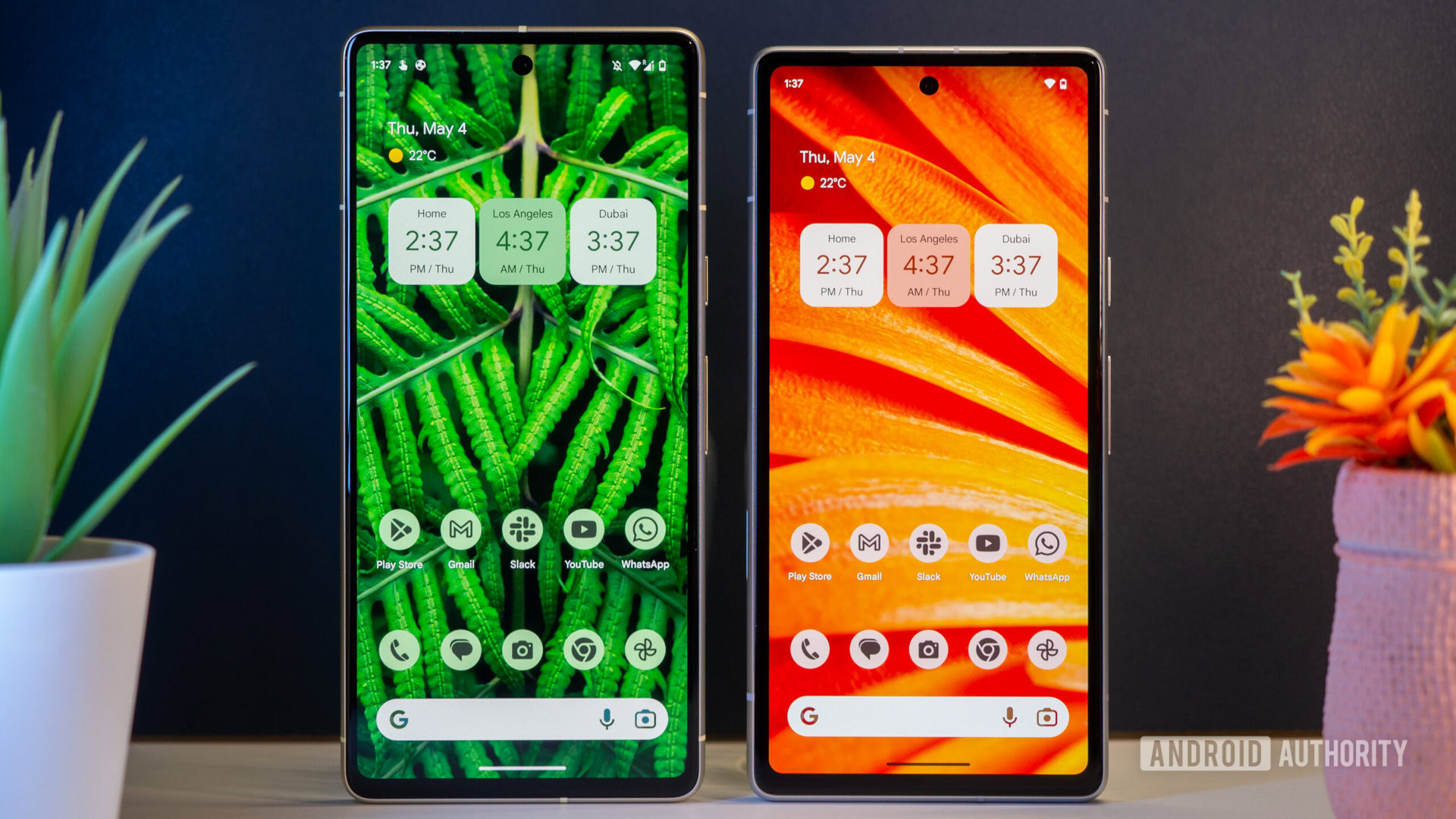
The two phones are remarkably similar in weight and size. The Google Pixel 7 is marginally heavier and taller, owing to that more prominent display. It measures 6.3 inches (155.6 x 73.2mm) across, which is ever so slightly larger than the Pixel 7a’s 6.1-inch panel (152.4 x 72 mm). The side profiles are very similar, too, with the newer model coming in slightly thicker at 9.0mm versus the Pixel 7’s 8.7mm, not including the camera bars.
It weighs 197g versus the 193g of the Pixel 7a. They are both a little on the heavier side for handsets of this size (the Samsung Galaxy S24 weighs just 168g, for example) but certainly nowhere near as bulky or unwieldy as the biggest models on the market. Despite the 7a’s plastic body, both phones feel pretty similar in the hand, especially since Google upgraded the Pixel 7a with a new anodized metal frame.
Google Pixel 7a vs Pixel 7: Camera
At first glance, you’d be forgiven for thinking there’s identical hardware hidden behind the Pixel’s signature camera bar. While both phones support main, ultrawide, and selfie snappers, there are subtle but important differences once you dive into the specifics.
The centerpiece of the Pixel 7’s camera array is a large 50MP 1/1.31-inch sensor, the same one found on the Pro model. The 7a ups the megapixel count to 64MP, but it’s a smaller 1/1.73-inch sensor, so it loses out on the large pixel sizes of its more expensive siblings. This makes a difference to the look of low-light images and detail capture. However, the Pixel 7a boasts a 13MP ultrawide with a broader 120-degree field of view than the 12MP, 144-degree camera in the Pixel 7.
It’s the same story on the front, with a 13MP sensor, compared to the Pixel 7’s 10.8MP selfie cam. The numbers suggest positive things for the Pixel 7a, but we’ve taken some side-by-side snaps to double-check.
Comparing a few pictures, we’ve concluded that the Pixel 7a’s primary camera lacks some sharpness and can produce slightly punchier colors. The new ultrawide fits more into the shot and performs better in a broader range of scenarios thanks to autofocus capabilities that the 7 doesn’t have. However, it suffers from noise in lower light, particularly at the frame edges. That said, pictures from the two look pretty much like for like at a glance, with similar color and portrait processing available on both. We’re giving the nod to the more expensive Pixel here for its better zoom snaps, but most will still be plenty happy with the pictures taken on that 7a at this price point.
Feature-wise, the Pixel 7a can’t quite match the Pixel 7. 4K60 video recording is reserved for the primary camera; the ultrawide and selfie models are capped at 4K30, unlike the flagship model. There’s no audio zoom or 10-bit HDR functionality in the budget model, while Action Pan and Cinematic Blur modes are also absent from the camera app. You still get Photo Unblur and Magic Eraser on both phones, though, while a new update has also brought a palm-activated timer feature for selfies to the duo.
Although Google has done a fine job improving the Pixel 7a’s camera capabilities over the previous generation model, it hasn’t fully closed the gap on the Pixel 7, which retains a few small advantages, mostly in the detail and longer range zoom departments.
Google Pixel 7a vs Pixel 7: Battery and charging
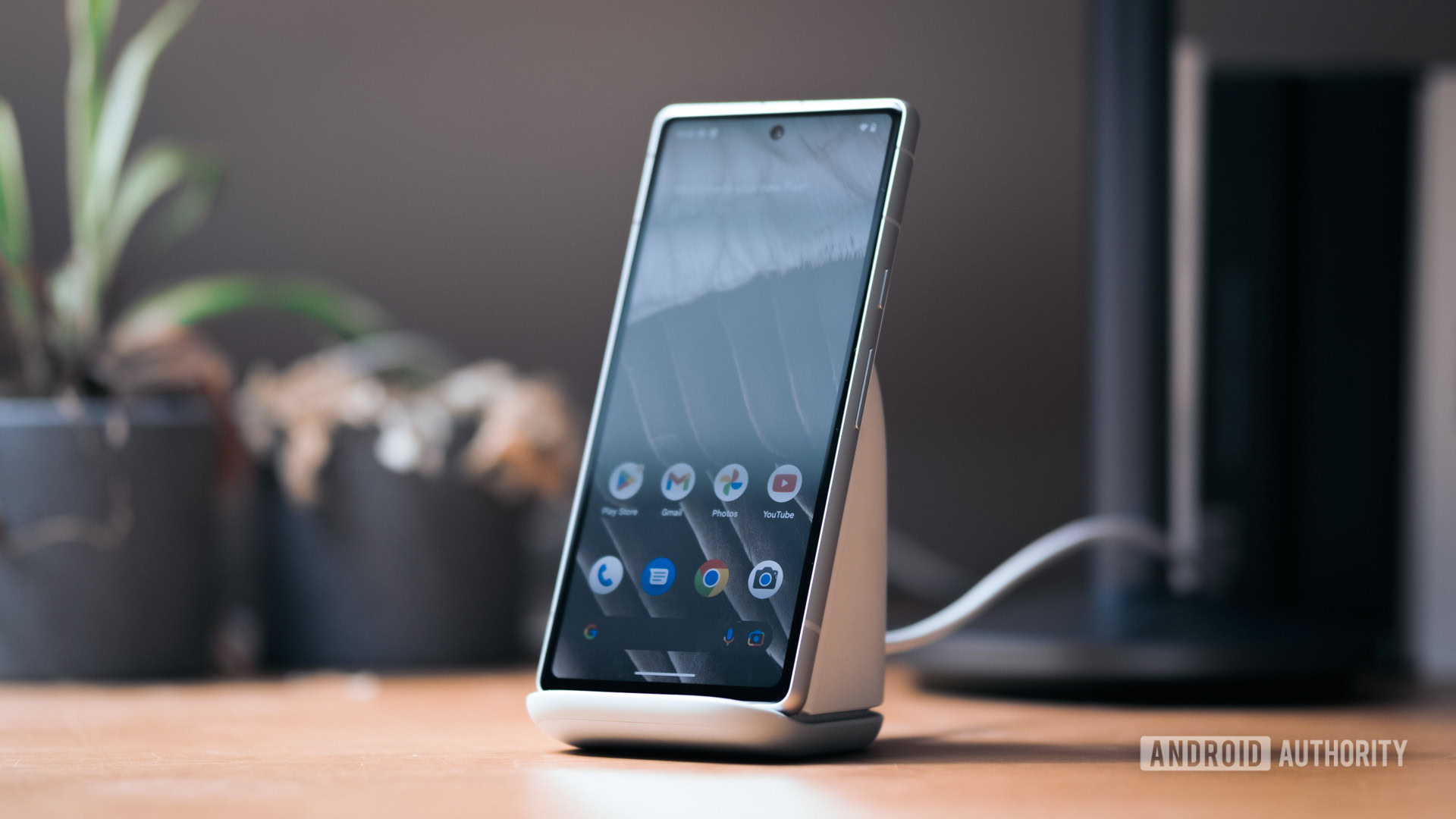
With essentially equivalent battery capacities, 4,385mAh for the Pixel 7a and 4,355mAh for the Pixel 7, an identical Tensor G2 processor, and roughly equivalent displays, we would expect battery life to be the same across both models. The Pixel 7 didn’t offer astounding battery life. It could still take most users through a full day, leaving lighter users with a little left in the tank. We’re looking at the same with the Pixel 7a.
That’s good because you’ll have to bring your own USB Power Delivery compatible plug if you want to charge these phones up. Google doesn’t include a charger with either model. Unlike the Pixel 7, you don’t need a USB PD PPS charger for the Pixel 7a.
The Pixel 7a supports USB Power Delivery, which is capped at a rather low 18W of power. By comparison, the Pixel 7 charges at 20W with PPS or just 18W with regular USB PD, so essentially, Google has removed the fancier specification to keep costs down. If you need some guidance, we have a guide for the best Pixel 7 chargers.
The Pixel 7 hits full in one hour and 41 minutes, while we tested the Pixel 7a at one hour and 46 minutes. Neither is particularly fast, but we have noted that the 7a can take even longer to charge when the phone is warm. We clocked it taking over two hours to full on at least one occasion.
Wireless charging, while a welcome addition to the Pixel 7a, is considerably slower still. Capped at just 7.5W, the phone takes an agonizing three hours or so to go from empty to full. Meanwhile, the Pixel 7 can pull 21W from the Google Pixel Stand (2nd gen), enabling wireless charging that is only a fraction slower than its wired charge times. If you thought the Pixel 7 was already a bit of a charging sloth, the 7a is really behind the fast charging curve.
Pixel 7a vs Pixel 7: Price
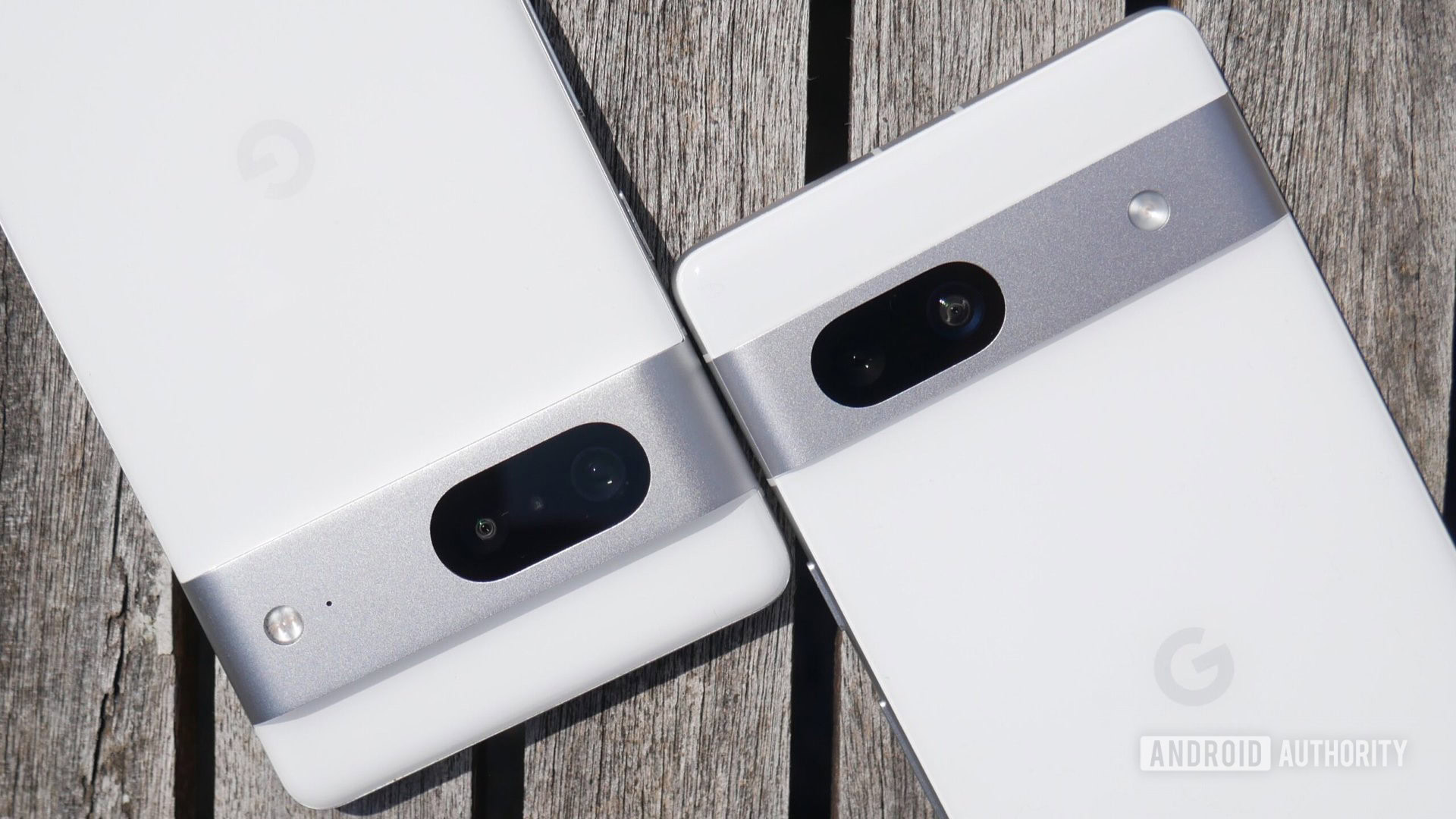
Google Pixel 7a: Starts at $499
Google Pixel 7: Starts at $599
Given the similarities we’ve encountered while comparing the Pixel 7a vs Pixel 7, it’s no surprise that there isn’t much between their price tags either. Just $100 separates the models’ launch prices. That does net you faster charging, superior build materials, and a marginally better camera setup with the Pixel 7. If you’re looking to save some cash, the Pixel 7a certainly succeeds at distilling Google’s smartphone formula down to just the essentials.
However, the Google Pixel 7 can often be bought for much less than its retail price, especially now that the Pixel 8 series is here. We’ve clocked it as low as $250 renewed (it’s hard to find new now), making it equivalent to or cheaper than the Pixel 7a, which is commonly discounted to about $375. With those discounts hanging around, it’s a no-brainer to grab the slightly better Pixel 7 over the 7a.
Google Pixel 7a vs Pixel 7: Which should you buy?
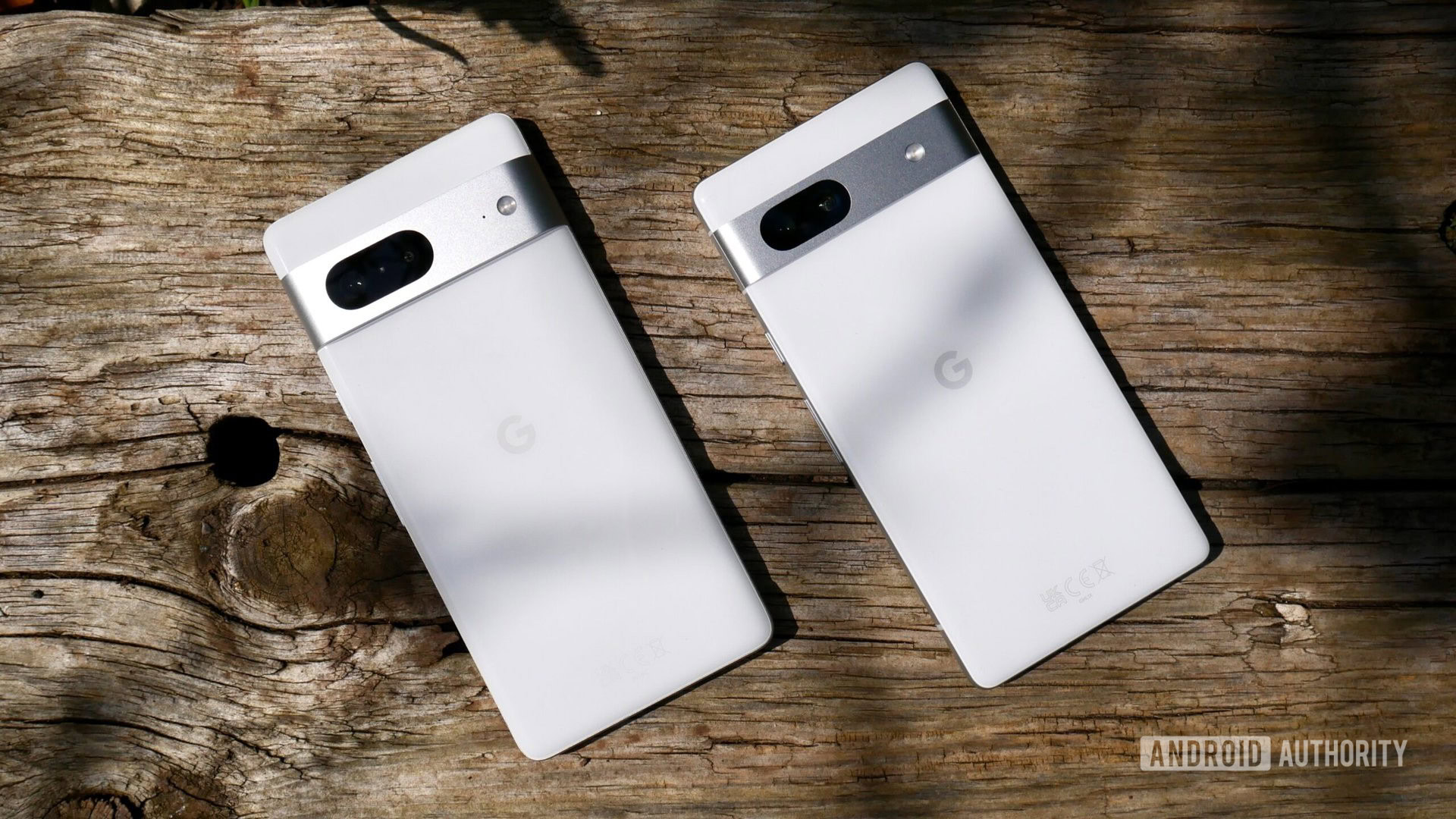
The theme of this versus has been more similarities than differences. Google has put us in a bit of a pickle.
That’s because the Pixel 7a is the best A series model Google has ever produced. The improved 90Hz display, Tensor G2 processor, solid build quality, and introduction of wireless charging have closed the gap on the brand’s flagship line. The Pixel 7a now goes toe to toe with the regular 7 model across all key areas. Given its cheaper launch price, it’s a slam dunk for the new phone.
With regular discounts, picking up the Pixel 7 is often the better deal.
However, the standard Pixel 7 still has advantages in the camera department. It has a better primary image sensor and software features, such as Cinematic Blur, that remain exclusive to the flagship tier. The phone is also faster to charge, particularly wirelessly. This is a bigger deal than usual, as the Tensor G2 can give the most demanding users a little battery anxiety. It also offers a better IP68 rating and Gorilla Glass Victus protection on the front and back. These give the phone the edge in durability as well.
The big issue, though, is the price. Through Google’s channel, $100 is not a huge difference and is probably worth it for those aforementioned Pixel 7 extras. That said, it’s also not an insignificant amount for the budget-conscious. Saving $100 is an equally good choice in that regard. The Pixel 7a offers essentially the same core Pixel experience for less. However, regarding how often the Pixel 7’s third-party retail price is reduced, your best bet is to keep an eye out for those Pixel 7 deals and snag one on the cheap. You can often find it cheaper than the 7a these days.
Of course, if neither of these are good enough for you, you can also opt for the newer Google Pixel 8, or maybe wait a bit for the upcoming Pixel 8a.
You should buy the Google Pixel 7a if:
- Your budget is more constricted.
- You want a slightly more compact phone that’s comfortable in the hand.
- A capable point-and-shoot camera phone is what you want.
- You’re a fan of the Coral colorway.
- There are no deals on the Pixel 7.
You should buy the Google Pixel 7 if:
- You want slightly faster wired and wireless charging.
- You prefer phones with larger displays.
- A more capable camera phone with nifty processing features and better video recording is a requirement.
- You need more than 128GB of internal storage.
- You want a Pixel in the Lemongrass colorway.
Would you rather buy the Pixel 7a or Pixel 7?

Solid performance and plenty of RAM
Improved 90Hz display
FAQs
The Pixel 7a has an MSRP of $499. That said, we’ve seen that price decrease since it was announced, thanks to fairly frequent sales.
The Pixel 7 is a little pricier than the Pixel 7a, at $599. However, you can often snag it at the same price or lower than the Pixel 7a.
It depends on what you require from a phone and how generous your budget is. The Pixel 7 offers a better all-round experience. The Pixel 7a is probably the closest the Pixel A line has ever been to Google’s mainline products, though. You aren’t losing out on too much if you choose the latter.
The Pixel 7 was announced on October 6, 2022, at the Made by Google event in New York.
Google launched the Pixel 7a at Google I/O 2023 on May 10, 2023.
On paper, yes. The Pixel 7a features an upgraded chipset, a faster screen, wireless charging, and an upgraded camera. However, the Pixel 6a is now much more affordable than at launch. Our Pixel 6a vs Pixel 7a comparison explores this question in more depth.
The Pixel 8 is an excellent phone, but it’s much pricier than the Pixel 7a and the Pixel 7. If you’re after Google’s latest, want extended software support, and can afford to spend the money, opt for the Pixel 8.